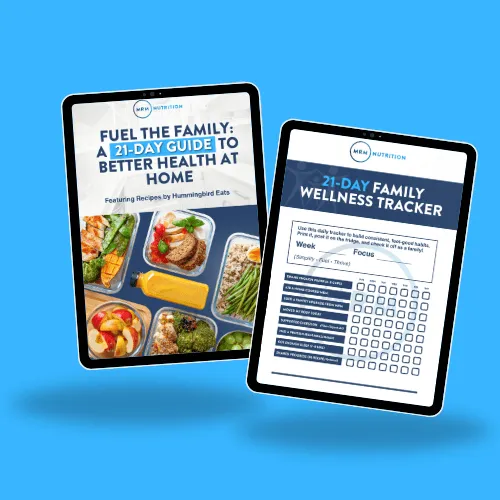Intuitive Eating 101: Being Mindful & Present
Guest Blog Post Written By: Emily Vazquez, RDN
Intuitive eating is a non-diet approach to health and wellness that helps you tune into your body signals, break the cycle of chronic dieting, and heal your relationship with food. The main focus of intuitive eating is shifting your food mentality from restrictions and rules to a place of food freedom. There is no counting calories, macros, or food restrictions.
If diet culture didn’t exist, intuitive eating would simply be normal eating.
We are all born intuitive eaters. However, we lose this as we grow older. Rules and restrictions are set around food, the media portrays diet culture messages, we are taught that there are “good” and “bad” foods. This leads to feelings of guilt and shame when “bad” foods are eaten, ultimately creating a negative relationship with certain foods.
The Intuitive Eating approach was developed by two Registered Dietitians and consists of 10 principles to overcome dieting to regain trust with your body. Understanding hunger and fullness is an important piece, but intuitive eating goes beyond that. It’s about understanding emotions, satisfaction, and mental health in order to meet both our physical and psychological needs.
Intuitive eating is also a weight-neutral approach to nutrition. Meaning, it is not aiming to lose or control weight. It works in conjunction with the setpoint weight theory, which tells us that our bodies have a weight that they want to be, feel most comfortable at mentally and physically, and can maintain within a range effortlessly.
So how do you switch to an intuitive eating mindset? Well, the first step is to practice mindful eating.
Mindful eating means being fully present when you are eating. No cell phones, no TV, just you and your meal in a peaceful environment. It can also be helpful to check-in with yourself before, during, and after a meal to assess your level of hunger and fullness.
This might look something like:
- Before the meal: Check in with where your hunger levels are at and what food you are about to eat. Be present and aware.
- During the meal: Notice how the food tastes. Do you enjoy what you are eating? Is it satisfying your hunger? How much more would you need to eat to feel satisfied?
- After the meal: Ask yourself how full you are. Do you want more food? How did that meal taste? Were you mindful during the meal?
It can be hard to do this exercise without judgment at first because we’re so caught up in what we think we “should” be eating. This process can be difficult if you struggle with food rules which is why it is recommended to work with a Registered Dietitian to help you through this process. Over time, you will become more in tune with how much food your body needs in order to feel its best!
Guest Blog Post Written By: Emily Vazquez, RDN of Emmys Yummys Nutrition Blog
* These statements have not been evaluated by the food and drug administration. This product is not intended to diagnose, treat, cure, or prevent any disease.


